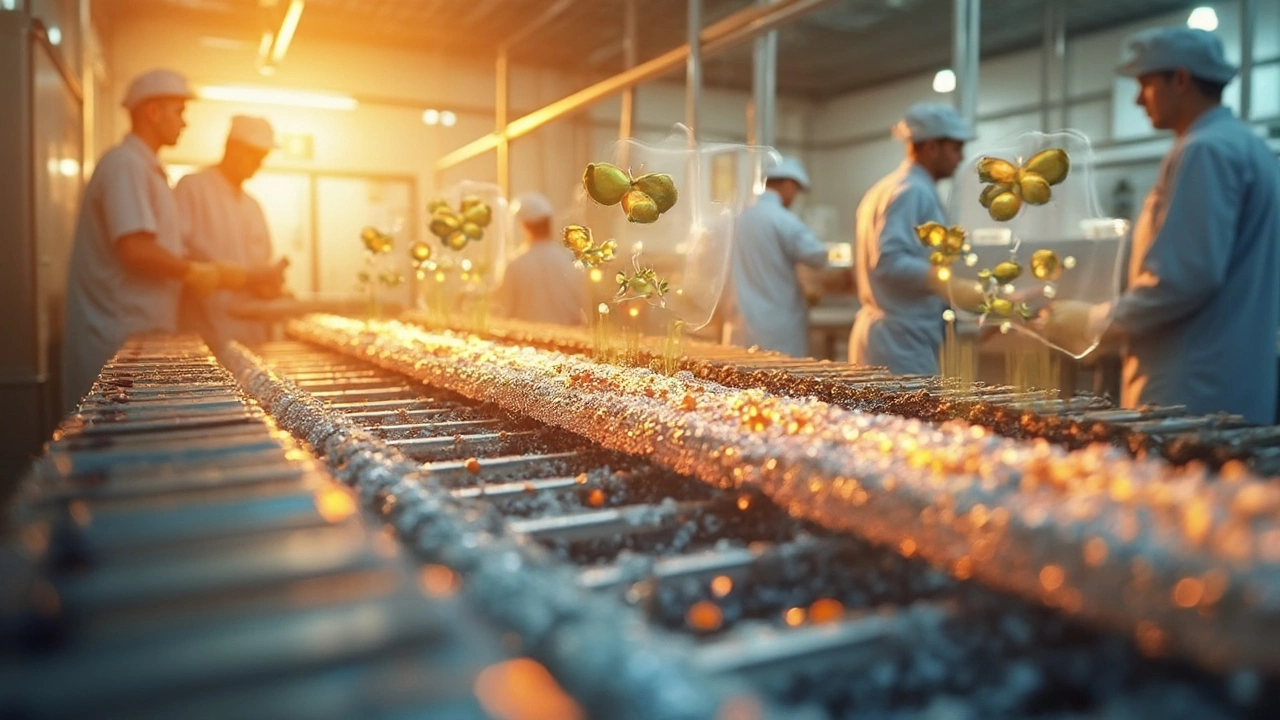Food Processing Units: What They Are and Why They Matter
When you buy a pack of biscuits or a bottle of sauce, a food processing unit is the place that turned raw ingredients into that ready‑to‑eat product. In simple terms, it’s a facility where raw food gets cleaned, cut, mixed, cooked, packed or stored under controlled conditions. These units keep food safe, boost shelf life, and make sure you get consistent taste every time.
India’s food market is huge – billions of people need affordable, tasty meals every day. That demand pushes manufacturers to set up more processing plants across the country. From mango pulp in Gujarat to dairy units in Punjab, each plant plays a role in feeding a growing population while creating jobs.
Core Technologies Used in Modern Food Processing
Today’s units rely on a few key technologies. First, automated cleaning systems remove germs and residues, so the product stays safe. Next, temperature‑controlled equipment like pasteurizers and chillers ensures that bacteria can’t grow during production. Finally, modern packaging lines seal products quickly, preserving freshness and reducing waste.
All of these machines need precise airflow control – that’s where air handling systems come in. Proper air circulation keeps temperature stable, removes excess moisture, and prevents cross‑contamination. A well‑designed air system can cut energy costs by up to 20 percent, which matters a lot for profit margins.
Common Challenges and Practical Tips
Running a food processing unit isn’t always smooth. Power outages, uneven raw material quality, and sudden changes in demand can derail production. One practical tip is to invest in backup generators and load‑shedding solutions, especially in regions with unreliable electricity.
Another hurdle is staying compliant with food safety regulations like FSSAI and ISO 22000. Keep records of every batch, train staff regularly, and run routine audits. Small steps like checking filter pressures daily can catch problems before they become costly recalls.
If you’re looking to set up a new unit or upgrade an existing one, start by mapping out the workflow. Identify bottlenecks – maybe a slow cutter or an overloaded dryer – and address them with the right equipment. Don’t forget to factor in space for future expansion; a cramped layout limits growth.
Choosing the right partner for air control, refrigeration or automation can make a big difference. Look for suppliers who offer local support, quick spare‑part delivery, and service contracts that include preventive maintenance.
In short, food processing units are the backbone of India’s food supply chain. Understanding the basics, investing in reliable technology, and staying ahead of regulatory changes will keep your operation running efficiently and profitably.

μm vs NM: Which Is Bigger in Food Processing Units?
Curious about μm and NM in food processing? This article breaks down the size difference, shows how both are used in food equipment, and explains why these small units matter more than you think. Get a grip on real usage examples like filtration levels. Includes easy tips for spotting where μm or NM make a difference in common food tech. If you're lost in the measurement maze, this guide clears it up fast.

Understanding Mil: The Tiny Giant in Food Processing
Ever heard of a 'mil'? It might be tiny, but this measurement is crucial in food processing. A mil, which equals 0.001 of an inch, helps determine thickness and ensure quality. This article dives into how this small unit impacts food packaging, preserving freshness and safety. Through practical insights and tips, you'll see why size really does matter in the world of food.

